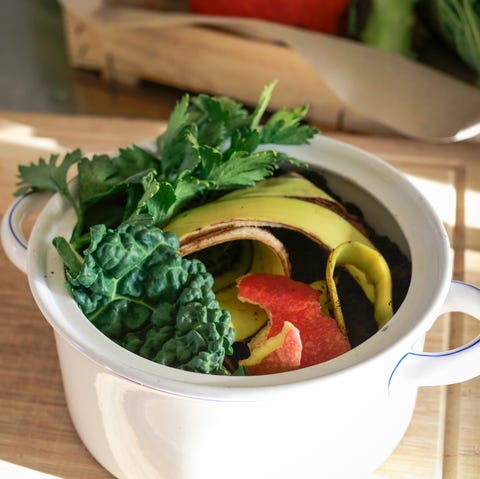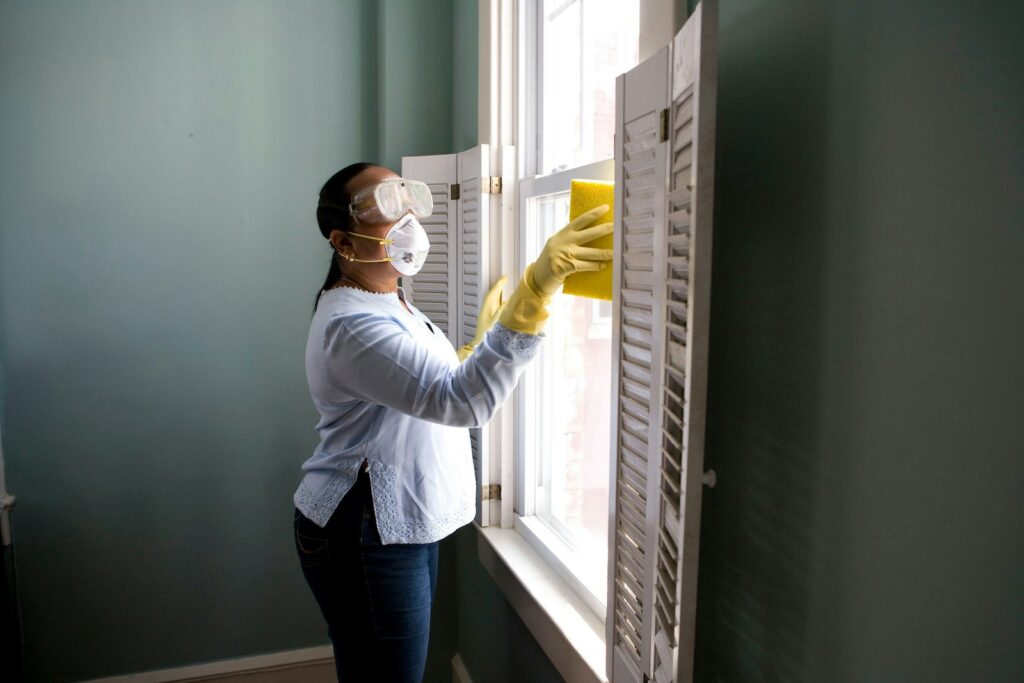Composting not only reduces trash in landfills, but it also enhances your yard at home. In accordance to the Environmental Safety Agency (EPA), “compost is organic substance that can be included to soil to assistance plants mature.” That means even larger produce, prettier bouquets and a much healthier backyard garden can arrive at no additional value to you once you start out preserving your family’s scraps and turning them into “plant food.”
Follow our information to composting so you can assist strengthen the earth — and your own dwelling garden — though decreasing the volume of garbage you toss away. Professionals from the Very good Housekeeping Institute share their strategies and tips for producing composting perform no matter wherever you dwell.
Why ought to I compost?
Composting is an powerful way to lessen the total of garbage your loved ones sends to the landfill. Not only does this lessen the methane gasoline made by landfills, which is a significant component in world-wide warming, but it can also assistance manage trash can odor in your dwelling. And the greatest payoff? You are going to be left with a wealthy fertilizer you can use in your individual backyard or donate to your favored lead to.
What can I compost?
Food stuff scrap and yard squander could be the most significant % of your compost material — you can involve a whole lot of products from your kitchen and yard. But other domestic products, like newspaper and hair, are also wonderful to incorporate to the combine.
✔️ Foods
- Fruit and vegetable peels and scrap
- Mushroom scraps
- Eggshells
- Bread, grains and pasta
- Coffee grounds and some coffee filters
- Unfastened teas and tea luggage
✔️ Lawn
- Grass
- Leaves
- Wood ash
- Sawdust
✔️ Other
- Newspaper
- Cardboard
- Dryer lint
- Hair
- Nail clippings
- Brown paper baggage
- Toothpicks
- Matches
- Reduce flowers
What can I not compost?
When they are biodegradable, dairy or animal merchandise (even animal bones) will start off to smell and draw in pests, so toss those people in your previous-college garbage can. The same goes for fat, oils and pet squander. Also, if you have a disease or insect ridden plant, really don’t insert it to the pile — it could contaminate your compost, building it unusable.
✔️ Meals
- Meat or animal bones
- Dairy
- Egg whites or yolks
✔️ Yard
- Diseased leaves or crops
- Coal ash
✔️ Other
- Grease
- Chemical compounds
- Pet waste
- Generate stickers
- Plastic
- Fat and oils
This written content is imported from embed-identify. You may possibly be capable to uncover the exact same articles in a different format, or you may well be capable to discover additional information and facts, at their world-wide-web website.
How can I compost exterior?
If you want to compost in your backyard, find out the dos and don’ts to set you up for good results. Selen Nehrozoglu, a study assistant at the New Jersey Agricultural Experiment Station in New Brunswick, NJ, shared her practical tips on how to deal with your organic and natural waste:
- Make a compost zone. If you plan to use a compost bin, make absolutely sure it is easy to entry and that there is area for a lid to open. Nehrozoglu suggests it is great to use any sealable containers for equally indoor and outside compost storage. “For indoor compost, containers with lids that twist shut have labored well in my expertise,” she says. “They are simple to open up and close when also keeping the scent contained.”
If you want to start out a compost pile, decide on an open area—you have to have at minimum 3 square ft of space—and scatter some twigs or straw to make certain aeration and drainage. Use rooster wire or fencing to defend your pile from animals these types of as raccoons (or even the neighbor’s puppy).
- Harmony “green” and “brown” resources. Regardless of whether you decide for a bin or a pile, Nehrozoglu claims a handy ratio for compost composition is roughly two-thirds “brown matter” (sticks, dry leaves, or filth) and 1-third “green matter” (food scraps or clean plant waste). Protecting a harmony is crucial is mainly because “brown” elements are loaded in carbon, feeding the organisms that break down the scraps, and “eco-friendly” supplies provide nitrogen — critical for constructing the mobile framework of your new soil.
“As a common rule of thumb, I like to include plenty of brown matter to absolutely protect the food items scraps,” she claims. “I use a shovel to blend the resources alongside one another, chopping down any of the much more cumbersome food scraps like melon peels. Right after mixing, I insert a thin layer of brown make any difference on leading.”
- Take care of the dampness. If your pile does not get more than enough rain, you will have to have to insert h2o with a watering can or hose. You could also decide to incorporate wet scraps when dampness is required. You are likely for moist, not soaking.
If you dwell in a pretty wet place, keep the pile included (a free tarp is good) so it does not get much too moist, which can bring about rot and wipe out handy microorganisms.
- Turn your compost. Your compost also desires oxygen. Devoid of air, your pile will get started to rot and smell, so you’ll need to rotate and stir the pile. With the suitable mixture of scrap, moisture and air, your compost really should smell like practically nothing but earthy grime. Nehrozoglu suggests that for manual mixing — use a pitchfork— you will preferably switch the scraps each two to 4 months.
If you’re using a bin, you could decide for a tumbler, which spins to blend the compost. Some also involve an internal rail that breaks up the compost to help with aeration. With a tumbling bin, comply with the manufacturer’s recommendation. Most counsel spinning your bin just about every two to three days.
When turning the compost, verify for heat. The centre of your pile or bin should really experience warm you want to sustain an inner temperature of 130˚F to 150˚F. When the compost is completely ready, it will quit making warmth and glance uniform and crumbly, like soil.
How can I compost inside of?
No matter if you are in an condominium or a residence without the need of a yard, you can established up a mini collection station ideal in your kitchen so you don’t have to trash meals scraps. See underneath for a step-by-stage guidebook from the gurus at the Superior Housekeeping Institute:
- Get a compost bin with a restricted-fitting lid. No matter whether you choose for a plastic bin or a stainless steel version, make certain it comes with a lid. Some plastic variations may well take in smells, describes Laurie Jennings, GH Institute director, which is why she works by using an outdated stainless steel ice bucket with a matching lid on her countertop to accumulate compostable substance.
- Line your compost bin with biodegradable baggage. Even though it’s tempting to want to reuse plastic luggage from the grocery keep, these are not biodegradable and can defeat the reason of your composting. Jennings swears by BioBag’s compostable luggage (obtainable in 3- and 13-gallon dimensions) even just after making an attempt a variety of additional costly manufacturers.
- Retailer whole compost bags in your freezer. You may want to switch the bag consistently so months-previous scraps you should not begin to stink up your space. As soon as your bin is at ability, secure the bag, and spot it in the freezer (sure, seriously!). This will make scraps simpler to transportation, get rid of any odor, halt lively decomposition and obtain you some time if you can not right away get rid of them.
- Find a community selection assistance or fall-off locale. If you really don’t have a back garden in which to compost your scraps, see if your group features assortment solutions. Make contact with your area municipality or check out CompostNow’s website which lists taking part services all over the place — some even provide at-household starter kits and normal curbside pickup. The rules all count on wherever you live. If you carry your have waste to a transfer station, examine with them far too: Numerous have designated compost regions.
If you are living in an apartment or in a metropolis without having selection, you probable have to place in a minimal excess effort and hard work to donate your compost, but it’s really worth it, clarifies Birnur Aral, Ph.D., director of the Health and fitness, Splendor & Environmental Sciences Lab, who is a dwelling-composter in a group that does not have a selection system.
“Every handful of months I deliver my scraps to my daughter’s higher education the place they have designed a composting bin,” she claims. “In the summertime, I convey baggage to my community farmer’s market place and give them to a neighbor who sells generate and takes advantage of the compost at her farm upstate.” It is really a very little way to give back again.
How can I use my compost?
Integrate it into your yard beds or sprinkle it on leading. Recall, compost is not a alternative for your soil, but alternatively functions as a pure fertilizer to nurture your soil and crops, so add it a pair of periods a 12 months for ideal final results.
This articles is made and managed by a 3rd party, and imported on to this webpage to help end users provide their electronic mail addresses. You might be capable to locate extra facts about this and equivalent content at piano.io







